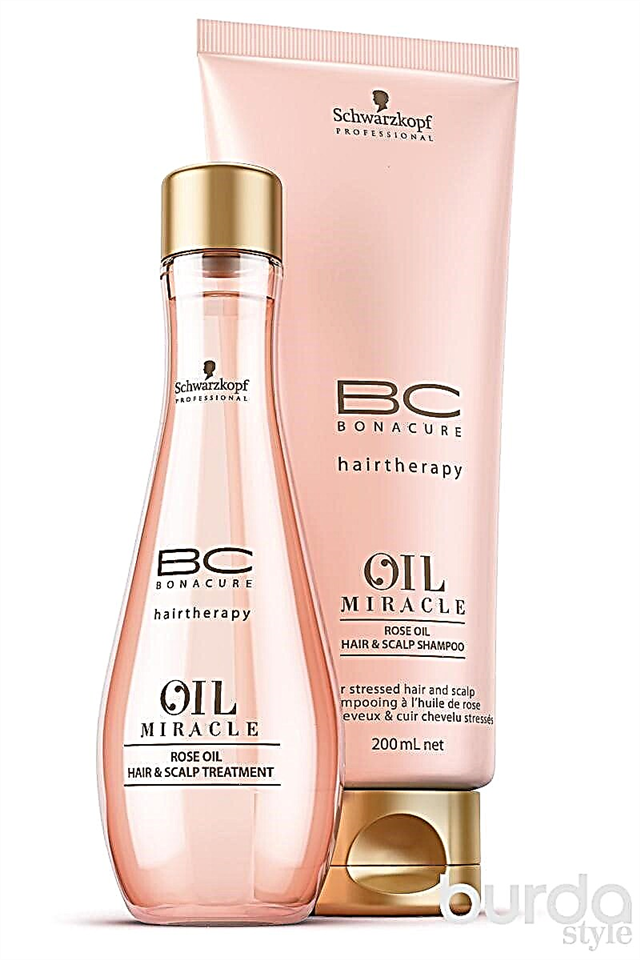A substantial amount of purchases is placed in this bag, while it is convenient to carry it on the shoulder due to handles of a special design.

This bag turns out to be voluminous and holds a lot of purchases, and wide double handles do not cut into the shoulder, and it is convenient to carry it - even heavy. The bag is well sewn from durable thin synthetic fabric. The edges are processed with an oblique inlay cut from the main fabric, but you can take the finished inlay.
DIY Strawberry Transformer Bag
You will need:
- paper, pencil, ruler and paper scissors - for the template;
- fabric for the bag (about 70x145 cm);
- pencil or crayon for fabric;
- if desired, a ready-made oblique tie (about 3 m);
- scissors for fabric;
- tailor pins;
- sewing machine and thread.
Large luggage shopper: master class
Step 1

Make a pattern using the given sizes. This template is a quarter bag. On the upper and left edges there will be folds of a four-fold flap of fabric. The allowances are already provided by the pattern.
Step 2

Fold the fabric flap in half across, along the weft, and then in half lengthwise along the lobar. Chip all layers with pins. Align the pattern by folds: align the left edge of the pattern with the fold along the lobar, the upper edge of the pattern with the transverse fold. Carry out a bag - you get one part.
Step 3

Prepare an oblique trim. How to make a slanting inlay, see the video here.
We need a tie 3 cm wide and about 3 m long. To make a tie, you can use the flap left after cutting the bag — the one that will be cut in the middle between the handles. Do not iron the edges of the tape.
Step 4

Fold the bag inside out. Align the side edges and pin them together with pins.

Sew a line, departing from the edge of 0.5 cm.

Iron the seams. Cut allowances to a width of 0.2-0.3 cm.

Then turn the bag inside out, straighten the allowances and iron.

Sew a line, departing from the edge of 0.5 cm.
This is a double inverted seam - it is durable (which is important for such a bag), plus it closes the sections without additional processing, and the inside looks neat.

Iron allowances on one of the halves of the bag.
Repeat on the other side.
Step 5

For the volume below, lay the folds. Turn the bag on the front side. On the lower cut from the side seams, measure 10 cm and mark.

Lay the folds inward, as shown in the photo, focusing on the labels.

Align the bottom sections and pin them together. Make sure that the edges of the laid folds are also aligned with the lower slices.

We connect the lower sections with the same double inversion seam as the side ones, but we will make it a little wider. Lay the stitch, 0.7 cm indent from the edge. Iron the seams and trim the allowances to a width of 0.5 cm.

Turn the bag inside out, straighten the allowances and iron. Before laying the second line, fix the folds with pins so that they do not move.

Lay the stitch back from the edge of 0.7 cm.
Step 6

Tighten one of the edges of the oblique along the entire length to the wrong side by 0.5 cm and iron it.
Step 7

We process the concave sections of the outer sides of the handles with an inline.

We stick a slanting inlay with that edge, which is not bent, from the inside to the cut sections, combining the edges (see photo). Put pins often, after 2-3 cm. The ends of the tape should protrude 1.5–2 cm beyond the edge of the cut.

Lay the stitch by removing the pins one at a time when the needle comes up to them. Leave 0.7 cm from the edge.

Unscrew the truss with allowances on the front side, iron and secure with pins. Stitch on the tape, stepping back from its edge 1 mm, and in the same way, taking out the pins one at a time.
So the treatment looks on the front side:

And so - with the wrong side:

Repeat for another pen.
The concave outer edges of the handles are processed:

Step 8

Fold the handles in half, wrapping the outer edges inward.

Align the edges of the pens and pin them together. Cut the protruding ends of the oblique inlay.

Lay the stitch at a distance of 0.5 cm from the edges of the handles, fastening them.
Step 9

Treat the inner edges of the handles with an inlay in the same way as the outer ones (see step 7). Here the ribbon will be closed in a circle, and so that the junction looks neat, bend the tip of the ribbon when you start pinning it (see photo).
So the pens look inside out:


The bag is ready.

Master class and photo: Natalya Pykhova
We sew and decorate a fabric bag: 4 workshops and 16 ideas
DIY organizer bag
DIY sports bag
Everything at hand: a hiking bag for needlework - master class



